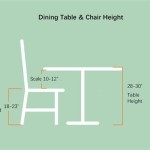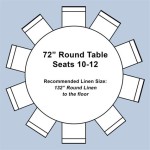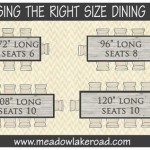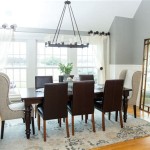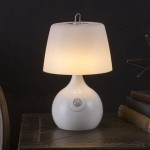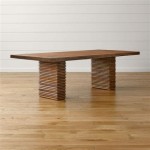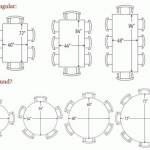```html
Metal Round Coffee Table Legs: A Comprehensive Guide
The coffee table, a ubiquitous piece of furniture in living rooms and common areas, serves as both a practical surface and a stylistic focal point. The legs that support this table play a crucial role in its overall stability, aesthetic appeal, and durability. Among the various types of coffee table legs available, metal round coffee table legs offer a blend of strength, versatility, and modern design that makes them a popular choice for a wide range of interior design schemes.
This article provides a comprehensive overview of metal round coffee table legs, exploring their characteristics, advantages, considerations for selection, and common applications. It aims to provide readers with the necessary information to make informed decisions when choosing metal round legs for their coffee tables or DIY furniture projects.
Durability and Stability
One of the primary advantages of metal round coffee table legs is their inherent durability and stability. Metals such as steel and iron, commonly used in their construction, possess high tensile strength and resistance to bending or deformation. This translates to a coffee table that can withstand significant weight and resist wobbling or tipping, even with uneven weight distribution.
The round shape of the legs further contributes to their stability. The circular cross-section distributes weight evenly, minimizing stress points and reducing the likelihood of failure under load. This is particularly important for coffee tables that are frequently used to hold heavy items such as books, magazines, or decorative objects.
The method of attachment also significantly impacts the overall stability. Metal legs are typically attached to the table top using screws, bolts, or welding. Properly installed screws or bolts provide a secure connection that resists loosening over time. Welding, when professionally executed, creates an even stronger and more permanent bond between the legs and the table top.
Furthermore, the gauge, or thickness, of the metal used in the legs directly affects their load-bearing capacity. Thicker metal provides greater strength and resistance to bending. Careful consideration should be given to the gauge of the metal based on the intended use and expected weight load of the coffee table.
Corrosion resistance is another crucial aspect of durability. Metal legs that are exposed to moisture or humidity can be susceptible to rust or corrosion, which can weaken the metal and compromise its structural integrity. Protective coatings, such as powder coating or galvanization, are often applied to metal legs to prevent corrosion and extend their lifespan. The specific type of coating and its application process should be considered when evaluating the durability of metal round coffee table legs.
Aesthetic Versatility and Design Options
Metal round coffee table legs offer a high degree of aesthetic versatility, making them suitable for a wide range of interior design styles. Their clean lines and minimalist design complement modern, contemporary, and industrial aesthetics. The simplicity of the round shape also allows them to blend seamlessly with more traditional or eclectic décor.
The finish of the metal legs plays a significant role in their overall aesthetic appeal. Common finishes include powder coating, chrome plating, brushed metal, and painted surfaces. Powder coating provides a durable and aesthetically pleasing finish in a variety of colors, allowing for customization to match existing furniture or color schemes. Chrome plating offers a sleek and modern look, while brushed metal provides a more subtle and understated appearance. Painted finishes allow for even greater customization options, enabling the legs to be easily coordinated with the overall design of the room.
The diameter and height of the metal round legs also contribute to their visual impact. Thicker legs create a bolder and more substantial look, while thinner legs offer a more delicate and refined appearance. The height of the legs determines the overall height of the coffee table, which is a crucial factor in its ergonomics and visual proportions. The height should be chosen to complement the height of the surrounding furniture, such as sofas and chairs, to ensure a comfortable and functional living space.
Furthermore, the angle at which the legs are attached to the table top can influence the overall design. Straight legs provide a classic and traditional look, while angled or splayed legs offer a more modern and dynamic aesthetic. The angle of the legs can also affect the stability of the table, with wider angles generally providing greater stability.
The integration of design features, such as decorative caps or feet, can further enhance the aesthetic appeal of metal round coffee table legs. These features can add a touch of elegance or personality to the legs and complement the overall design of the coffee table. The choice of design features should be carefully considered to ensure they are consistent with the overall style of the room and the intended aesthetic.
Installation and Maintenance Considerations
The installation of metal round coffee table legs is typically a straightforward process, but it requires careful attention to detail to ensure proper stability and longevity. The specific installation method will depend on the type of legs and the material of the table top. Screws, bolts, and welding are the most common methods of attachment.
When using screws or bolts, it is important to pre-drill pilot holes in the table top to prevent splitting or cracking the wood. The diameter of the pilot holes should be slightly smaller than the diameter of the screws or bolts being used. The screws or bolts should be tightened securely, but not overtightened, as this can strip the threads or damage the table top.
For metal table tops, welding is often the preferred method of attachment. Welding creates a strong and permanent bond between the legs and the table top. However, welding requires specialized equipment and skills, so it is typically best left to experienced professionals. Properly executed welds are crucial for the structural integrity of the coffee table.
Maintenance of metal round coffee table legs is generally minimal. Regular cleaning with a mild detergent and water is usually sufficient to remove dust and dirt. A soft cloth should be used to avoid scratching the finish. For metal legs with a powder coating, a non-abrasive cleaner should be used to avoid damaging the coating.
If rust or corrosion develops, it should be addressed promptly to prevent further damage. Rust can be removed with a wire brush or sandpaper. The affected area should then be cleaned and treated with a rust inhibitor before being repainted or recoated. Regular inspection of the metal legs for signs of rust or corrosion can help to prevent more serious problems from developing.
Loose screws or bolts should be tightened periodically to ensure the stability of the coffee table. If the legs become wobbly, it may be necessary to replace the screws or bolts with larger ones or to add additional support to the table top. Proper maintenance can significantly extend the lifespan of metal round coffee table legs and ensure the continued stability and aesthetic appeal of the coffee table.
```
Round Coffee Steel Table Base Legs Metal Etsy

Rustic 31 Wide Metal Legs And Oak Top Round Coffee Table 64j76 Lamps Plus

Metal Dining Table Legs I Round Steel Etsy

Round Coffee Table Reclaimed Wood Metal Base Etsy

Rustic 31 Wide Metal Legs And Oak Top Round Coffee Table 64j76 Lamps Plus

Coffee Table Legs Round Bench Base Steel Etsy

Modern Metal Coffee Table Legs 443 Cleo Flowyline

51 Round Coffee Tables To Give Your Living Room A Boost Of Style
Metal Round Coffee Table Base For Live Edge Wood Or Epoxy Ebay

Rustic 18 Wide Metal Legs And Oak Top Round Side Table 64j64 Lamps Plus

